Why Do Oscar Fish Rearrange Their Tank Decorations? Understanding This Fascinating Behavior
This post may contain affiliate links.
Oscar fish owners often wake up to find their carefully arranged aquarium decorations completely rearranged overnight. This behavior can be both fascinating and frustrating, leaving many aquarists wondering why their Oscar fish seem determined to redecorate their tanks. Understanding the reasons behind this behavior is crucial for successful Oscar fish care and creating an environment that satisfies their natural instincts.
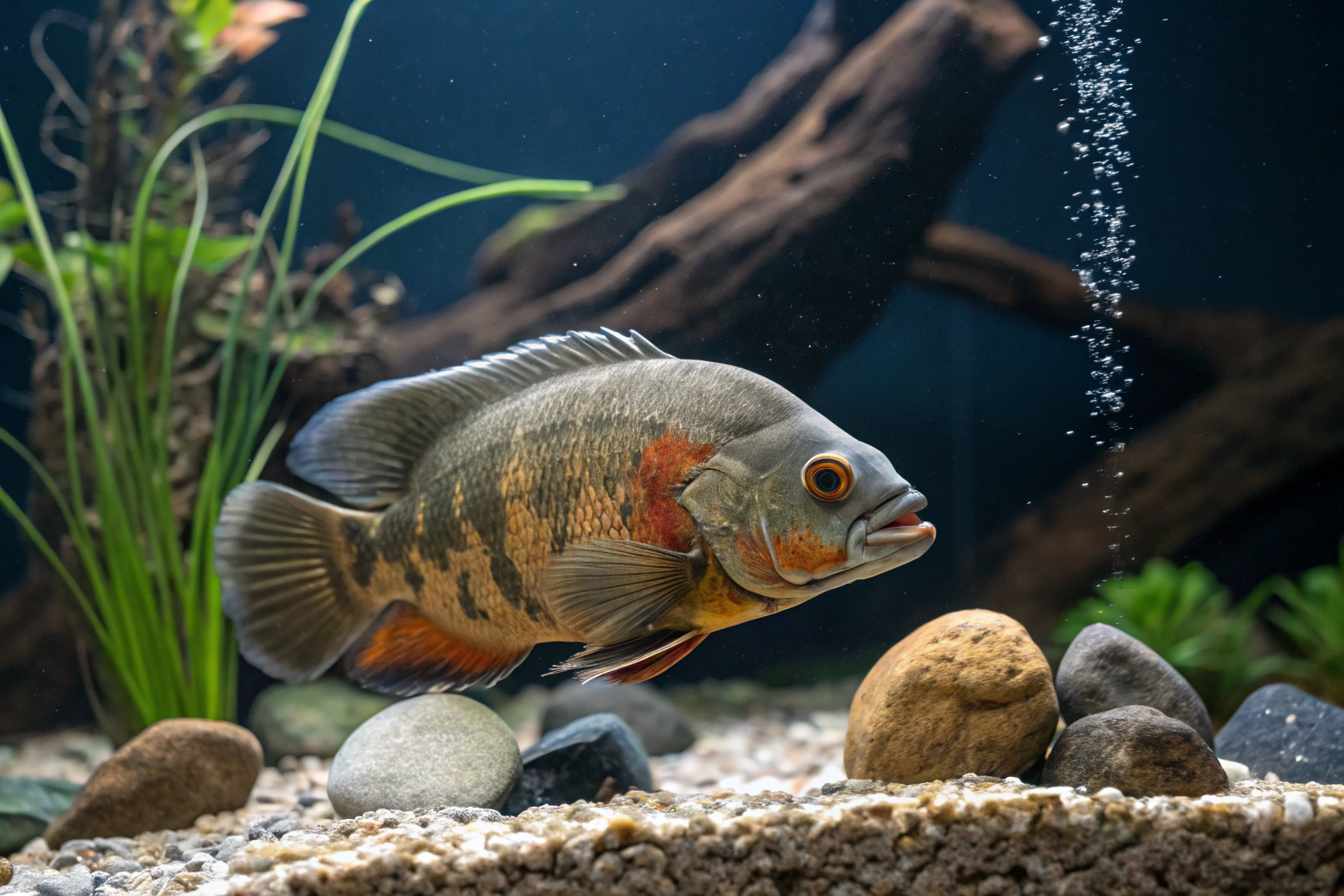
The Science Behind Oscar Fish Decoration Rearranging
Oscar fish (Astronotus ocellatus) are highly intelligent cichlids with complex behavioral patterns that reflect their wild origins. In their natural habitat throughout the Amazon Basin, Oscars actively modify their environment by moving rocks, digging in substrate, and clearing areas for various purposes. This instinctual behavior doesn’t disappear in captivity, making decoration rearranging a normal and healthy expression of their natural tendencies.
The behavior is driven by several neurological and behavioral factors, including territorial instincts, nesting preparations, stress responses, and environmental optimization. Understanding these underlying motivations helps aquarists create better living conditions and appreciate their Oscar’s intelligence and complexity.
Primary Reasons Oscar Fish Move Tank Decorations
1. Territorial Establishment and Defense
Oscar fish are naturally territorial creatures that establish and defend specific areas within their environment. By moving decorations, they create physical boundaries and organize their space according to their territorial needs. This behavior intensifies when multiple Oscars share a tank or when other fish species are present.
Territorial rearrangement typically involves moving rocks, driftwood, and other decorations to create barriers or define specific zones. Oscars may pile decorations to create elevated areas that serve as vantage points for monitoring their territory and watching for potential threats or intruders.
2. Breeding and Nesting Behavior
One of the most common reasons for intensive decoration rearranging is breeding preparation. Both male and female Oscars engage in elaborate nest-building behaviors that involve extensive environmental modification. They clear flat surfaces, move obstructing decorations, and create protected areas suitable for egg laying and fry care.
This Oscar fish breeding behavior can be particularly intense, with pairs working together to create the perfect nesting environment. Even Oscars that never successfully breed may exhibit these instinctual nesting behaviors, leading to regular decoration rearrangement.
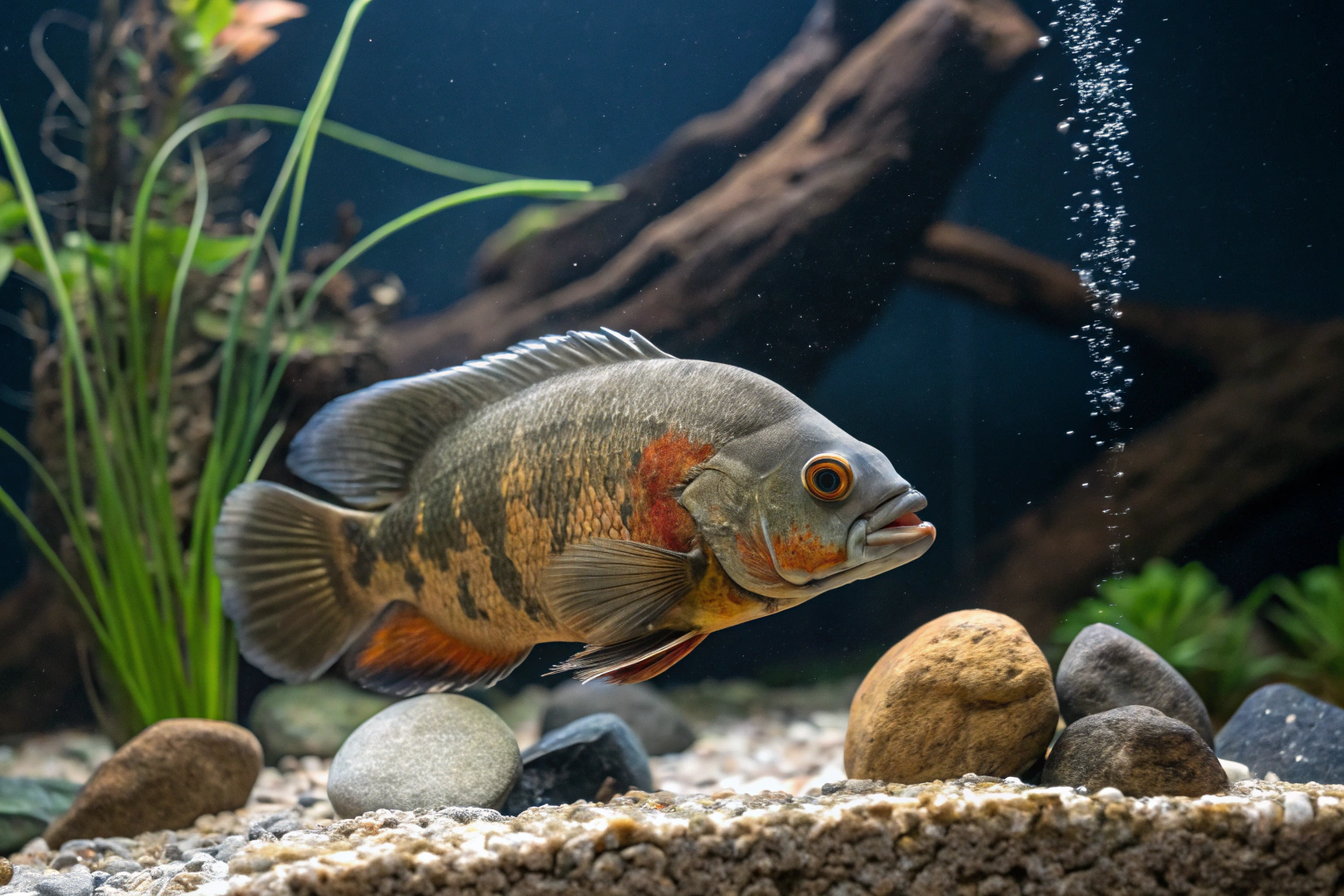
3. Stress Response and Environmental Control
Oscars may rearrange decorations as a response to stress or changes in their environment. This behavior allows them to exert control over their surroundings and create a sense of security. Common stress triggers include new tank mates, changes in water parameters, lighting modifications, or disruptions to their regular routine.
The act of rearranging decorations serves as both a coping mechanism and a way to optimize their environment for reduced stress. By creating hiding spots, escape routes, and comfortable resting areas, Oscars can better manage environmental pressures and maintain psychological well-being.
4. Foraging and Hunting Instincts
In the wild, Oscars are opportunistic feeders that actively search for food by moving objects and investigating crevices. This foraging behavior translates to captivity, where Oscars may move decorations to search for hidden food particles, investigate new areas, or simply satisfy their natural curiosity.
This behavior is particularly common after feeding times or when Oscars detect food odors in areas beneath or behind decorations. Understanding this aspect of Oscar fish feeding behavior helps explain why decoration rearranging often occurs around meal times.
5. Boredom and Mental Stimulation
Highly intelligent fish like Oscars require mental stimulation to maintain psychological health. In environments lacking adequate enrichment, decoration rearranging becomes a form of self-directed activity that provides mental stimulation and prevents boredom-related behavioral problems.
This behavior is more common in smaller tanks or environments with limited environmental complexity. Providing adequate aquarium enrichment can help channel this behavior in positive directions while maintaining the Oscar’s mental well-being.
Factors That Influence Decoration Rearranging Behavior
Tank Size and Layout
The size and layout of the aquarium significantly influence how frequently and extensively Oscars rearrange decorations. Smaller tanks often see more intensive rearranging as Oscars attempt to optimize limited space, while larger tanks may experience more selective decoration movement.
Proper aquarium setup for large cichlids considers the Oscar’s need for territorial control and provides adequate space for natural behaviors without becoming destructive to the overall aquarium ecosystem.
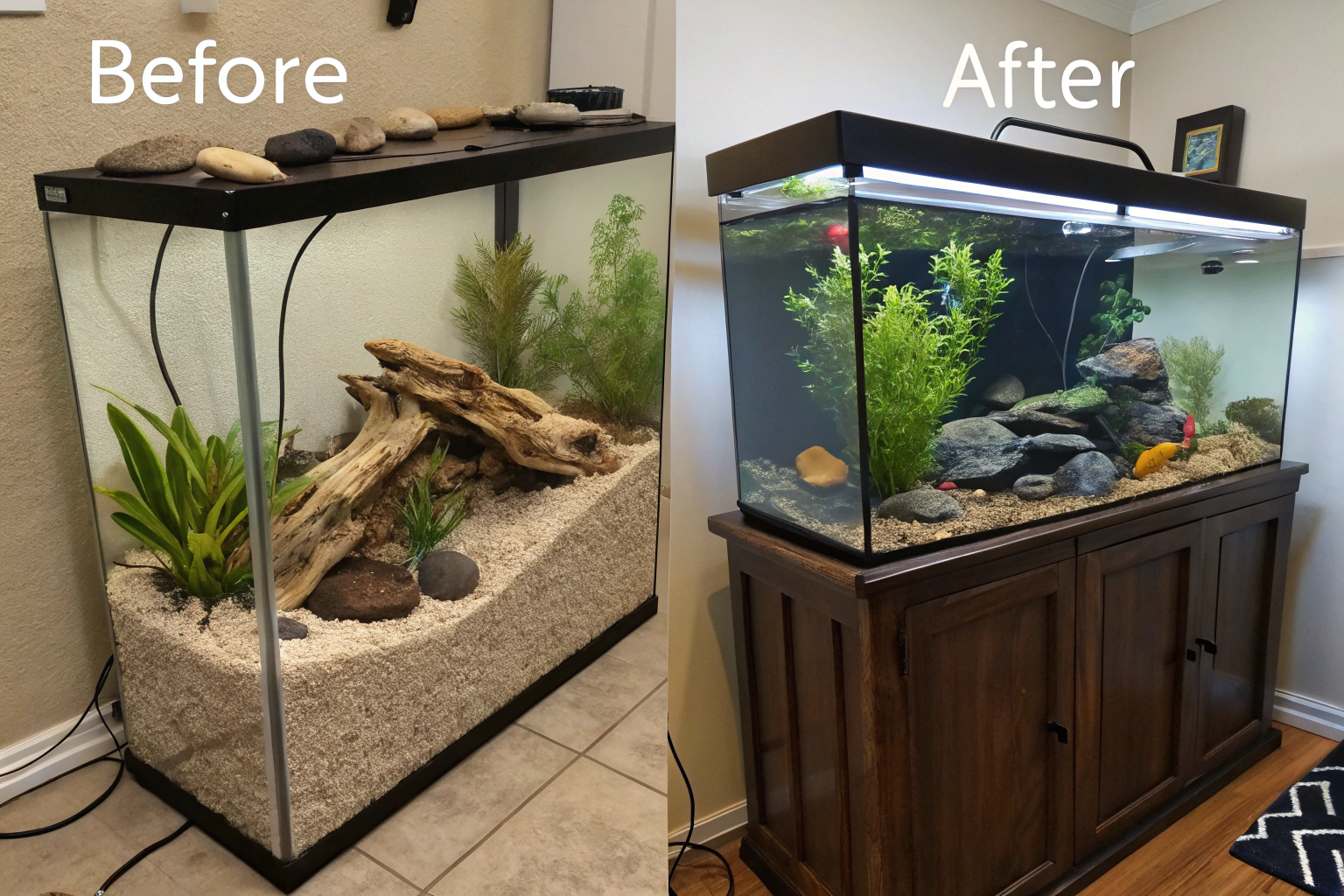
Water Quality and Parameters
Poor water quality can increase stress-related decoration rearranging as Oscars attempt to find more comfortable areas within their environment. Maintaining optimal water parameters reduces stress-induced behaviors and promotes more natural, purposeful decoration movement.
Regular monitoring of ammonia, nitrite, nitrate, pH, and temperature ensures that decoration rearranging remains a natural behavior rather than a stress response to poor environmental conditions.
Social Dynamics and Tank Mates
The presence of other fish significantly impacts Oscar decoration rearranging behavior. Oscars may increase territorial behaviors when housed with other cichlids or reduce certain behaviors when kept with compatible, non-threatening species.
Understanding Oscar fish compatibility helps predict and manage decoration rearranging behavior in community tank settings.
Breeding Cycles and Hormonal Changes
Hormonal fluctuations associated with breeding cycles can dramatically increase decoration rearranging behavior. These cycles may occur regardless of whether successful breeding takes place, leading to periodic intensification of environmental modification behaviors.
Recognizing these natural cycles helps aquarists anticipate and accommodate increased decoration rearranging during certain times of the year or in response to environmental triggers.
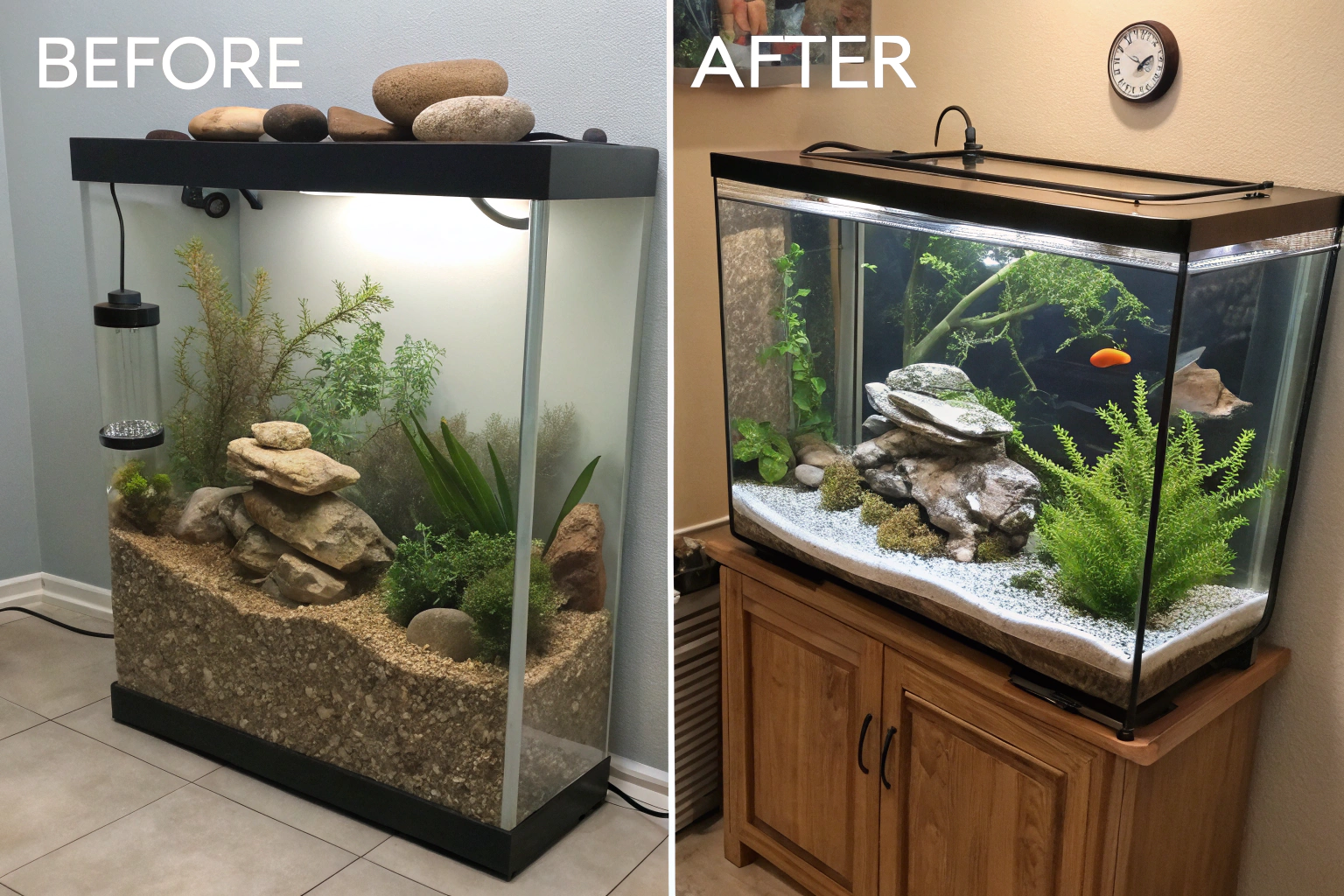
Managing Oscar Fish Decoration Rearranging
Choosing Appropriate Decorations
Selecting decorations that can safely be moved by Oscars is crucial for both fish safety and aquarium maintenance. Avoid sharp edges, unstable structures, or decorations that could trap or injure the fish during rearrangement activities.
Heavy decorations should be securely positioned to prevent dangerous collapses, while lighter decorations can be allowed to move freely. Consider using rounded river rocks, smooth driftwood, and purpose-built aquarium decorations designed for large, active fish.
Creating Stable Zones
Establishing areas with immovable decorations provides stability while allowing Oscars to freely rearrange other areas. This approach satisfies their need for environmental control while maintaining essential aquarium infrastructure like filtration equipment and heaters.
Secure important decorations using aquarium-safe adhesives or weighted bases that prevent movement while allowing Oscars to focus their rearranging activities on designated areas.
Providing Enrichment Alternatives
Offering alternative forms of mental stimulation can reduce destructive decoration rearranging while maintaining healthy behavioral expression. This includes puzzle feeders, training activities, and interactive toys designed for intelligent fish species.
Regular aquarium maintenance routines that involve minor decoration adjustments can also provide mental stimulation while allowing aquarists to maintain their preferred aquascape.
When Decoration Rearranging Becomes Problematic
Excessive Stress Indicators
While decoration rearranging is normal, excessive or obsessive behavior may indicate underlying stress or health issues. Signs of problematic behavior include constant rearranging, aggressive decoration throwing, or behaviors that result in fish injury.
Monitoring for additional stress indicators such as color changes, appetite loss, or unusual swimming patterns helps differentiate between normal behavior and stress responses requiring intervention.
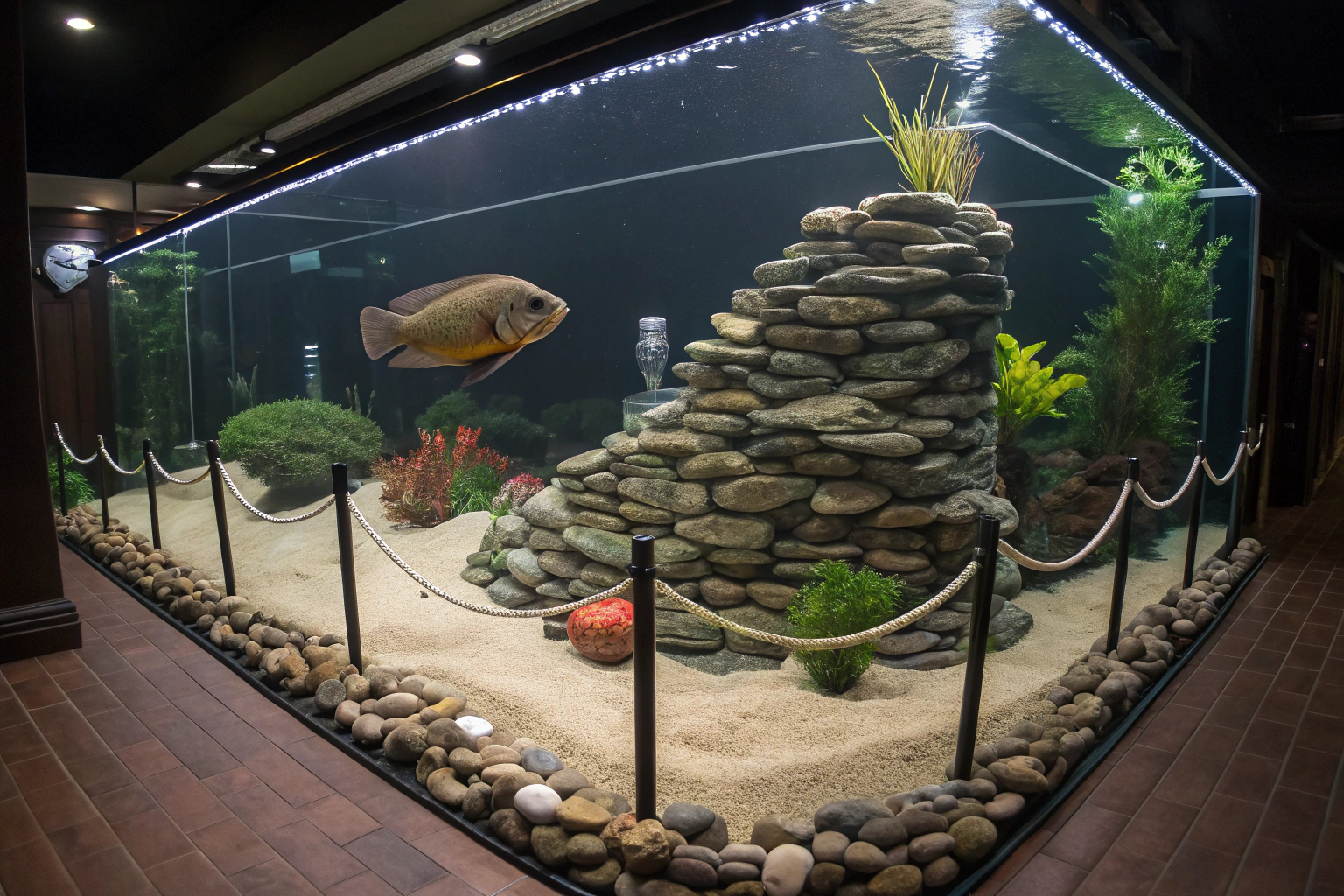
Equipment Damage and Safety Concerns
Intensive decoration rearranging can damage aquarium equipment, create unsafe conditions, or disrupt essential aquarium functions. Regular inspection of equipment placement and decoration stability prevents dangerous situations and maintains aquarium functionality.
Consider protective measures for essential equipment and ensure that decoration rearranging cannot compromise filtration, heating, or electrical safety within the aquarium environment.
The Benefits of Understanding This Behavior
Improved Aquarium Design
Understanding why Oscars rearrange decorations allows aquarists to design more effective and satisfying environments. This knowledge helps create aquascapes that work with natural behaviors rather than against them, resulting in healthier, happier fish.
Incorporating this understanding into aquarium design principles creates more naturalistic environments that support both the fish’s behavioral needs and the aquarist’s aesthetic preferences.
Enhanced Fish-Keeper Relationship
Recognizing decoration rearranging as intelligent, purposeful behavior rather than destructive activity helps build appreciation for Oscar fish complexity and intelligence. This understanding enhances the relationship between fish and keeper while promoting better care practices.
Better Breeding Success
Understanding the relationship between decoration rearranging and breeding behavior can improve breeding success rates and help aquarists provide optimal conditions for successful reproduction.

Conclusion: Embracing Your Oscar’s Interior Design Skills
Oscar fish decoration rearranging is a fascinating expression of their intelligence, natural instincts, and environmental needs. Rather than viewing this behavior as problematic, aquarists can appreciate it as a sign of a healthy, mentally stimulated fish expressing natural behaviors.
By understanding the underlying reasons for this behavior and designing aquariums that accommodate these needs, Oscar fish owners can create environments that satisfy their fish’s instincts while maintaining functional, beautiful aquascapes. The key lies in working with your Oscar’s natural tendencies rather than against them.
Remember that each Oscar has its own personality and preferences. Some may be more active decorators than others, and individual fish may show different patterns of behavior throughout their lives. Observing and understanding your specific Oscar’s behavior patterns helps create the most suitable environment for their individual needs.
For more detailed information about Oscar fish behavior and care, consider exploring additional resources about advanced Oscar fish keeping and connecting with experienced aquarists who can share insights about managing these intelligent and engaging fish.
